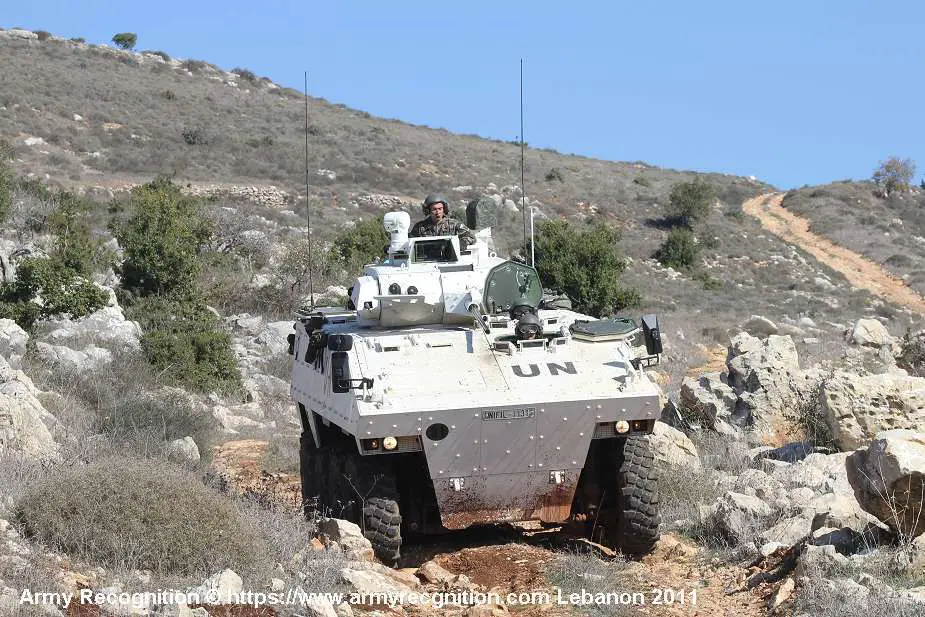On February 12, 2024, an announcement was made by Nexter (a subdivision of KNDS) and Arquus, revealing their collaboration with the French Directorate General of Armaments (DGA) on an innovative project: the development of a digital twin demonstrator for the VBCI Infantry Fighting Vehicle (IFV). This project is part of the "Digitization of Operational Maintenance" initiative, NumCo.
Follow Army Recognition on Google News at this link

Nexter KNDS and Arquus announce the development of a digital twin demonstrator for the VBCI. (Picture source: Army Recognition)
This initiative results from a continuous effort to increase the availability and reliability of military equipment, a top priority for the French Army. In 2020, it had already expressed its ambition to utilize cutting-edge technologies to minimize the downtime of its ground equipment. Among these technologies are the use of advanced sensors for equipment health monitoring and the application of 3D printing to optimize maintenance.
The ERMES program, conducted by Nexter between 2019 and 2021, had already highlighted the benefits of HUMS (Health and Usage Monitoring Systems) for monitoring the state of the IFVs, facilitating more effective management of these vehicles.
The digital twin of the VBCI, proposed in the NumCo project, represents a significant advancement in this field. It is a virtual replica that will allow for the simulation and analysis of the vehicle's performance and maintenance needs in real time. This technology promises to significantly improve the operational maintenance of the IFVs through advanced simulations, supporting the joint efforts of industry professionals, the DGA, and the French Army.
The main advantage of this system lies in its ability to create an accurate virtual replica of the IFV, integrating real and simulated data to predict and analyze the vehicle's performance in various scenarios. This advanced modeling enables engineers, technicians, and decision-makers from the defense industry, the DGA, and the Army to collaborate more effectively on the engineering and maintenance of vehicles.
One of the key benefits of the digital twin is predictive maintenance. With HUMS sensors installed on the IFVs, the system collects comprehensive data on the condition and use of the vehicles. This data is then analyzed and transformed into digital models that predict the lifespan of mechanical components and identify potential failure risks before they occur. By anticipating these problems, the system allows for more precise planning of maintenance operations, thus reducing downtime and improving the operational availability of the vehicles.
Additionally, the digital twin facilitates the diagnosis of failures by providing a detailed and real-time representation of the vehicle's condition. This accelerates the troubleshooting process and ensures that maintenance interventions are both more targeted and more effective, based on precise data rather than assumptions.
Finally, the NumCo project, with its incremental and agile approach, anticipates continuous improvement of the digital twin system. Based on the data collected from instrumented IFVs, the system will evolve to offer even more accurate analyses and improved maintenance predictions. This approach ensures that the digital twin will remain at the forefront of technology and continue to meet the changing needs of the Army.
The development of this digital twin will follow an agile and incremental approach, relying on data collected from 20 IFVs equipped with HUMS. This information will feed predictive algorithms capable of assessing the lifespan of mechanical components and anticipating potential failures, thus facilitating diagnostics and maintenance planning.
This ambitious project could revolutionize how maintenance and technical monitoring of armored vehicles are managed, offering a promising outlook for the modernization of operational maintenance practices within the Army. Nexter and Arquus envision this digital twin as a key component of their future offerings for modernizing military fleets, marking a turning point in optimizing the operational maintenance of military equipment.















